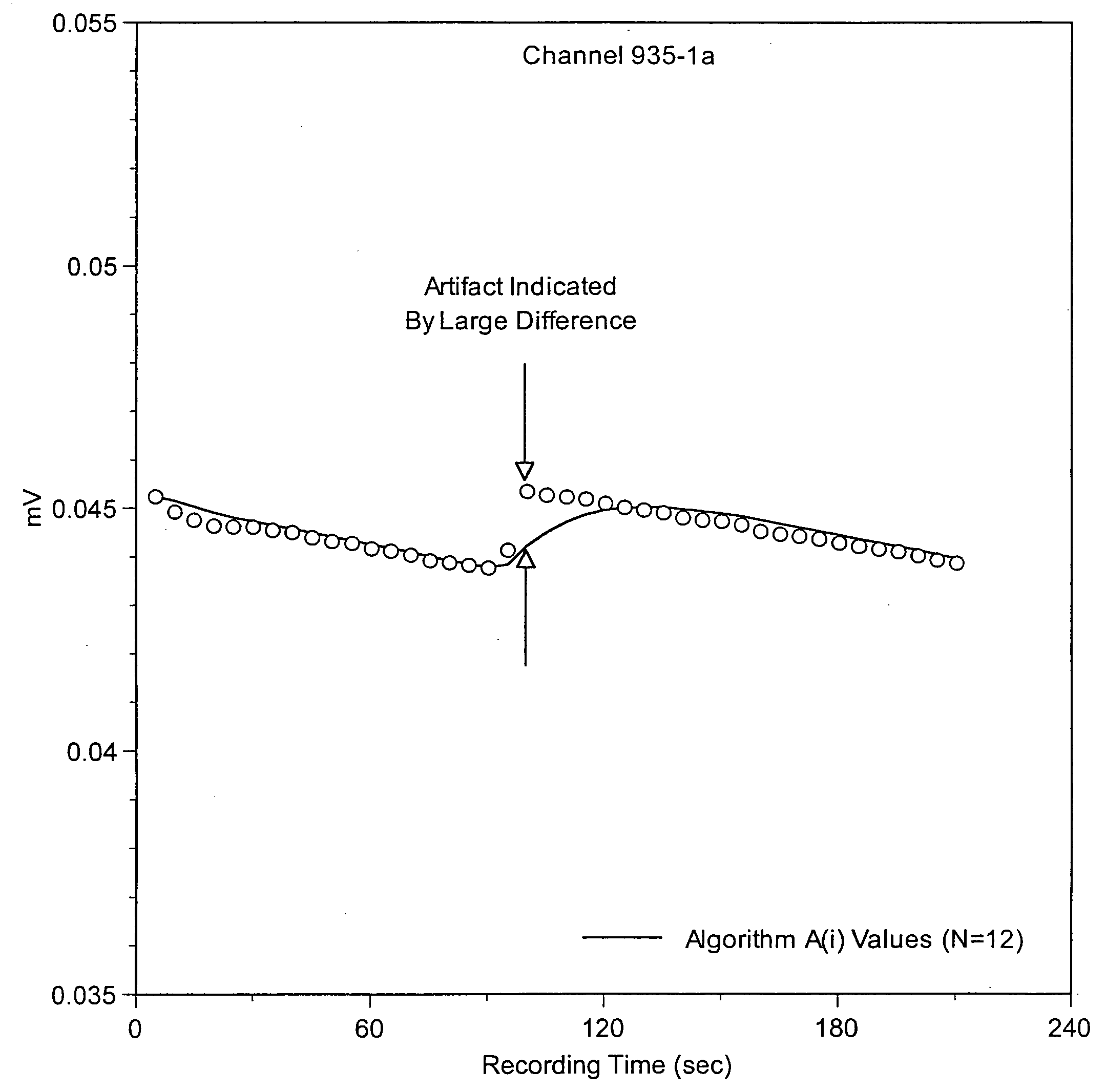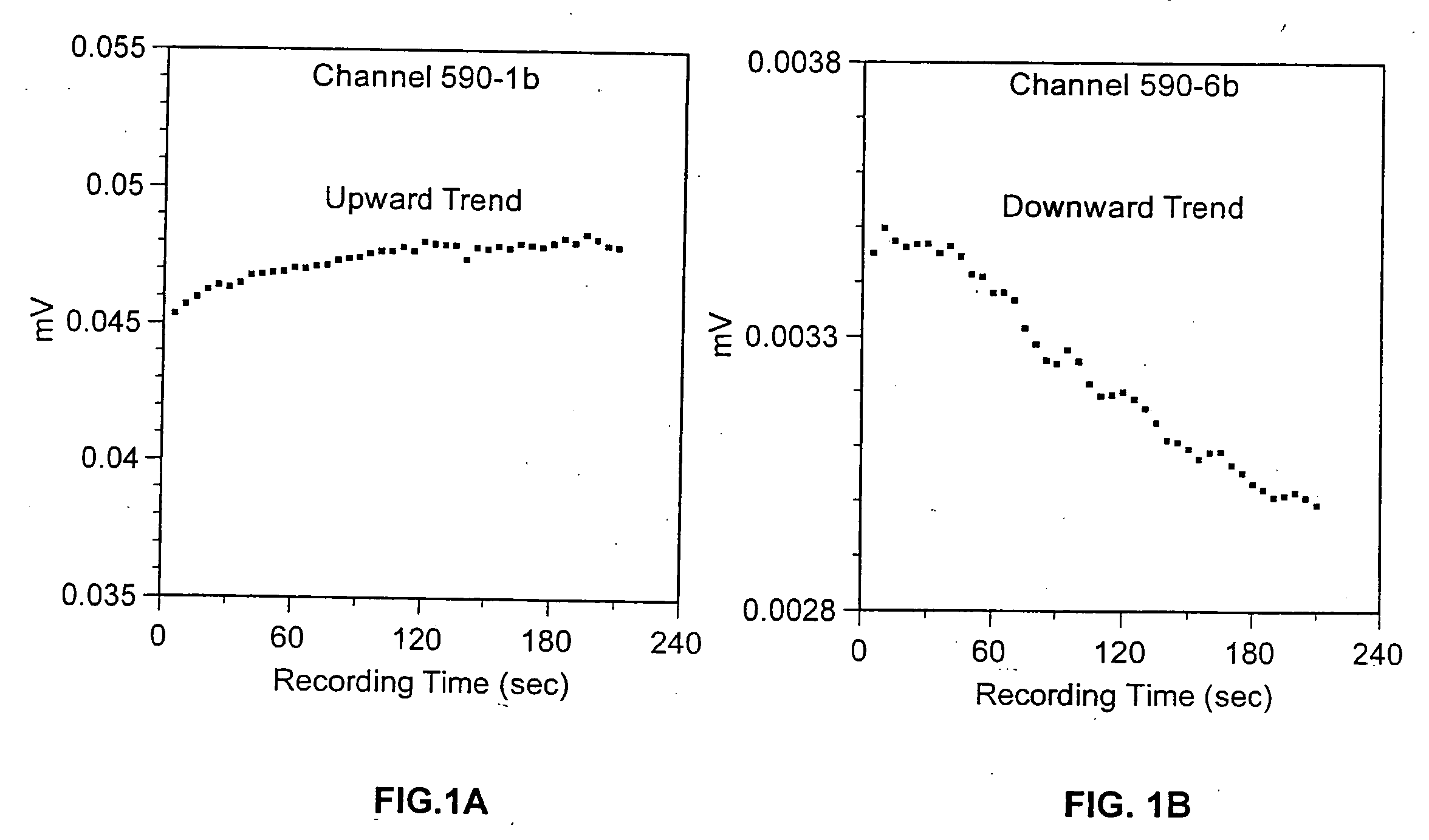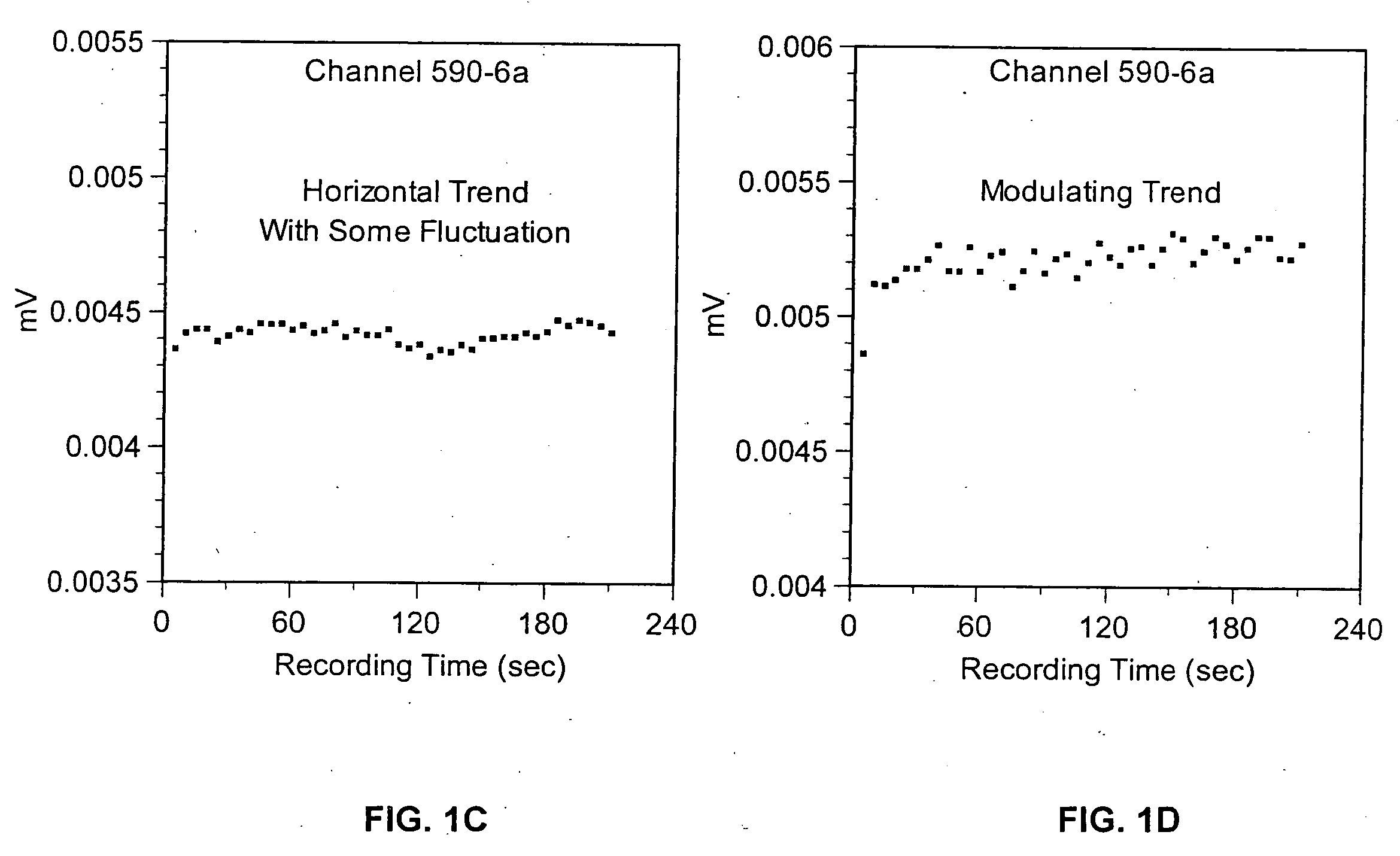Method for detecting artifacts in data
- Summary
- Abstract
- Description
- Claims
- Application Information
AI Technical Summary
Benefits of technology
Problems solved by technology
Method used
Image
Examples
example 1
[0081]FIG. 8A depicts measurements of normalized optical data recorded on patient no. 11, test no. 17, in the first clinical trial from four (4) of the 32 channels. The values of A(i) closely followed the data beginning with the sixth (6th) point. The data were determined to be completely free of artifacts. FIG. 8B depicts the corresponding values of D(i), which represent the absolute difference between each value of A(i) and each value of the normalized data. The values of D(i) remained well below the threshold of 0.02, thereby confirming the absence of artifacts in these measurements.
example 2
[0082]FIG. 9A depicts measurements of normalized optical data recorded on patient no. 10, test no. 9, in the first clinical trial from four (4) of the 32 channels. The values of A(i) failed to closely follow the data at various locations between the sixth (6th) point and the end of the test. Data from all four (4) channels were determined to have artifacts at one or more locations. FIG. 9B depicts the corresponding algorithm values of D(i), all of which intermittently exceeded the threshold of 0.02, thereby confirming the presence of artifacts.
example 3
[0083]FIG. 10 summarizes the number of tests in the first clinical trial that contained data artifacts detected by the method of this invention. A total of 37 out of 400 tests were identified as having artifacts in some or all of the measurements taken in the 32 optical channels. Patient no. 19 experienced the highest incidence of artifacts, i.e., 6 artifacts out of 20 tests.
PUM
 Login to View More
Login to View More Abstract
Description
Claims
Application Information
 Login to View More
Login to View More - R&D
- Intellectual Property
- Life Sciences
- Materials
- Tech Scout
- Unparalleled Data Quality
- Higher Quality Content
- 60% Fewer Hallucinations
Browse by: Latest US Patents, China's latest patents, Technical Efficacy Thesaurus, Application Domain, Technology Topic, Popular Technical Reports.
© 2025 PatSnap. All rights reserved.Legal|Privacy policy|Modern Slavery Act Transparency Statement|Sitemap|About US| Contact US: help@patsnap.com



